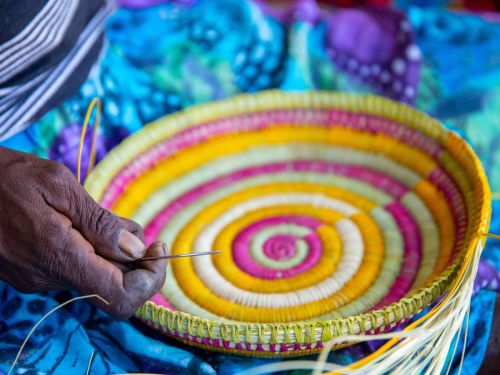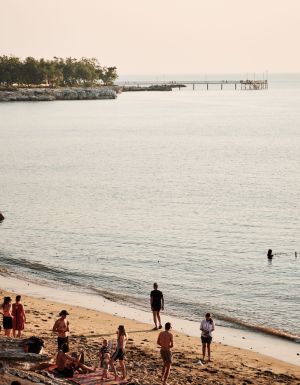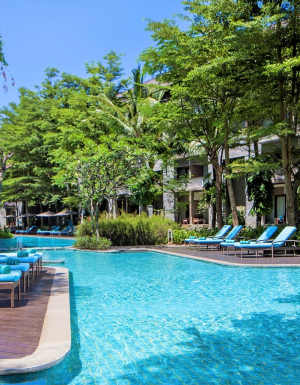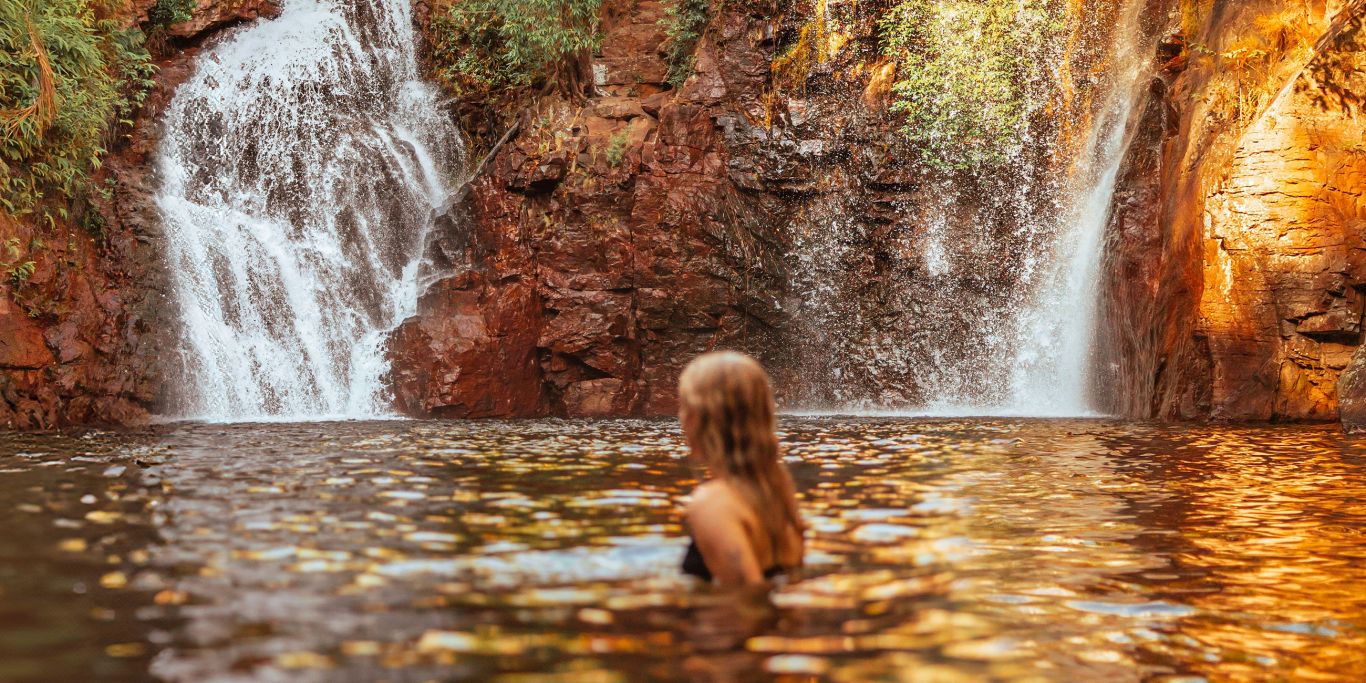It’s the liveliest time of year to visit Darwin, when the days are not too hot, not too wet, and the city comes alive with one of the biggest events on the Indigenous art calendar.
Every August the Darwin Aboriginal Art Fair attracts thousands of people to see the canvases, bark paintings, sculptures, ceramics, textiles and jewellery presented by First Nations artists from across the country.
Under the umbrella of the Darwin Festival, the art fair takes place over three days in August alongside several other major Indigenous events. Grab the calendar and squeeze in: an exquisite runway parade as part of the National Indigenous Fashion Awards; a night under the stars at the National Indigenous Music Awards; and a visit to the Museum and Art Gallery of the Northern Territory for the National Aboriginal and Torres Strait Islander Art Awards.
Here’s everything you need to know about the Darwin Aboriginal Art Fair – or DAAF for short – before visiting Darwin.
What is the Darwin Aboriginal Art Fair?
The first DAAF was held in 2015 and it has grown to secure a reputation as one of the country’s most significant Indigenous art events.

Taking place annually in the huge 4000 square-metre air-conditioned exhibition hall of the Darwin Waterfront’s convention centre, the fair has become a true celebration of First Nations art and culture; a vivid, joyous coming together of artists, art admirers, performers, designers and art centres.
With a buzzing marketplace where buyers have access to artists connected to more than 70 remote Indigenous art centres (and where 100 per cent of the money from the sale of artworks goes directly to the artists and their communities) it’s all about creativity, interaction, knowledge sharing and of course, shopping.

When is the Darwin Aboriginal Art Fair?
For 2024, DAAF is running from 9th to 11th August.
The Darwin Festival will take place from 8th to 25th August 2024. Running alongside DAAF is Country to Couture, a high-energy runway event on 6th August 2024, presenting collections from some of Australia’s most talented First Nations fashion designers and artists working in remote Indigenous communities.

Highlights of the Darwin Aboriginal Art Fair
Besides the diverse artworks on display and for sale from over 1,500 artists, highlights of the fair include the (ticketed) opening ceremony, artist talks and masterclasses, as well as traditional dance and (for the young at heart) the children’s activity station.

Workshops can include soft sculpture making with Yarrenyty Arltere Artists, or sitting with master weavers from Injalak Arts in Gunbalanya or the renowned Numbulwar Numburindi Arts to learn the process of weaving a basket.

Each year the fair grows in physical events so it feels different from year to year as it welcomes more visitors who come to immerse themselves in the oldest living cultures on earth.

How to buy Aboriginal Art ethically
One of the motivating principles of DAAF is to educate and encourage buyers to think and act ethically when it comes to purchasing Indigenous art. Buying art in person and online during the fair comes with the reassurance that no commission is charged, with all money going to the artists or Aboriginal-owned and operated community art centres.

While this exacting standard ensures the relationships formed at DAAF between artists and art lovers are mutually beneficial and morally responsible, it also confirms the foundation’s focus on fostering an environment in which Indigenous artists’ depth of talent and craftsmanship is celebrated and appreciated.
In fact, this is something the foundation champions 365 days a year, including by encouraging prospective buyers to be informed and guided by the Indigenous Art Code . The code is designed to ensure that artists are treated fairly, honestly and respectfully. It encourages buyers to ask the art centre, dealer or gallery three key questions: who is the artist? Where are they from? How does the artist get paid?

Details for visiting
Entry costs: Free. The opening ceremony takes place on a Thursday evening and tickets can be purchased through the Darwin Festival.
Opening times: Friday 10am to 4pm; Saturday 10am to 5pm; Sunday 10am to 4pm.
Accessibility: Darwin Convention Centre is easily accessible for parents with prams, the disabled and the elderly.
Getting there: Darwin Convention Centre is located at the Darwin Waterfront Precinct, a popular tourist area that is a five-minute walk from the Darwin CBD.
Parking: Darwin Convention Centre has easily accessible public car parks.
















